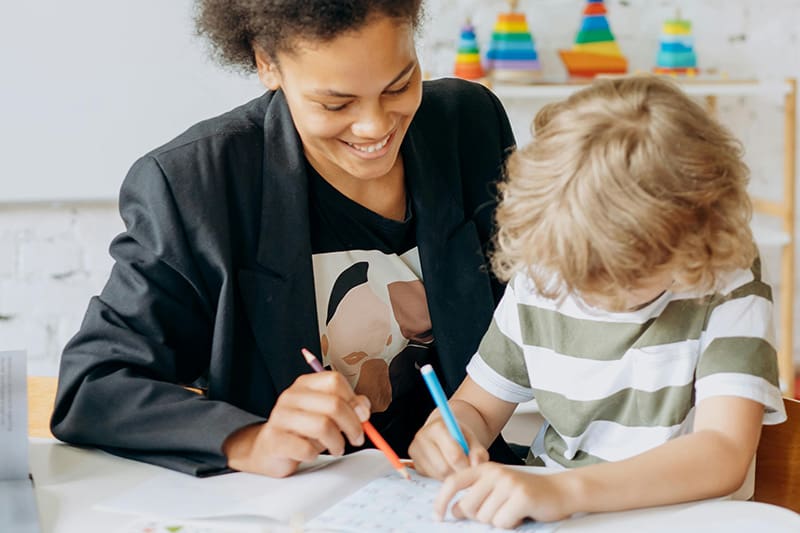The /p/ sound is a bilabial sound, meaning that it involves both lips being pressed together to create. Air is then released through the lips and slightly open teeth, creating the /p/ sound. Unlike the /b/ sound, which is made with the same mouth position, the /p/ sound is an unvoiced sound. The sound you hear comes from the pressure of the breath that is released, whereas what you hear from a voiced sound like /b/ comes from the vibration of the speaker’s vocal cords.
The /p/ sound is often one of the very first sounds your child will learn on his journey towards speech. As such, it is one of the oundational letters of his emerging vocabulary. Most children will be able to create this sound effectively within the first 2-3 years, but that is not always the case. If your child still has trouble with the sound by age 4, it is strongly recommended that a licensed speech-language therapist work with them in order to help reverse the delay.
The key to helping your child pronounce the /p/ sound, either on your own or alongside professional speech therapy, is to engage and stimulate your little one while they learn. Here are a few speech therapist-recommended tips for parents:
- Verbal cues
To make sure your child understands the sound you are working on and the correct way to pronounce it, repeat the sound over and over for your child. As she grows more comfortable with making the sound herself, start combining it with vowels, such as “pa pa pa”, “po po po” and “up up up.”
- Visual Cues
Drawing attention to the motion of your mouth while making the /p/ sound will help your child focus on his own mouth. Try pointing to your closed lips before making the sound, and pulling your finger away slightly as you pronounce it. To help your child understand the motion involved in producing the sound, try bringing your fingers together in the manner of a puppet when you want your child to close his lips in preparation for making the sound.
- Tactile Cues
As you say the sound, have your child hold her hand in front of your mouth to feel the warm air that is released from your mouth. Then ask her to put her hand in front of her own mouth and encourage her to practice the /p/ sound until she can feel her breath too. Another technique is to demonstrate taking a deep, sharp breath and then releasing it with a big “Pop!” This is fun for your child to imitate, and helps them form their mouth correctly.
As a fun activity, also try holding a tissue in front of your mouth while you make the /p/ sound. The force of your breath will make the tissue move, or “dance.” Encourage your child to make the tissue dance as well with her own articulation of the sound.












